The two sphinx statues and the bust for King Ramses II seem to eye visitors up, making you wonder if you should ask them for an admission ticket before you go in.
The Matrouh Archaeology Museum, northwest Egypt, is the only antiquities-related museum in the governorate. President Abdel Fattah el Sisi inaugurated the museum on 1 March 2018.
As soon as you step in, the modern world is but a dream. You become a time traveller through Egyptian history.
“When you enter the museum, you feel as if you are entering Egypt itself, where its protectors represented by the two statues of the Sphinx stand guard against any external danger. As for the statue of a king, his only concern is preserving the unity of the state while mindful of the country’s security from outside threats,” Saad Haridi, the manager of the Museum, told the Egyptian Mail.
The two-storey building houses over 1,000 artefacts of different types and materials — statues, coins, textiles, carpets, ceramic plates, lamps associated with a variety of activities and dating back to many periods from prehistoric to Islamic.
These artefacts are collected from antiquities stores in Egypt, Haridi said.
On the ground floor are statues of gods such as the baboon, associated with the god Thoth, deity of the moon and learning, the jackal-headed Anubis, protector of graves, Sekhmet, the goddess of war.
A statue of Shashank, founder of the XXII Dynasty is here. Shashank united Egypt, which had been divided between two ruling cities: Tanis in the northeast delta and Thebes in the south.
On display on the ground floor are mosaics from the Graeco-Roman period.
The upper floor contains seven halls, each one of a certain topic.
The first tackles trade and hunting, which are important activities enjoyed by the people of Matrouh.
Contracts for buying and selling, gold coins from the Islamic era, and bronze coins from the Roman period are to be seen here.
Interestingly, there are jars that once contained wine. These jars were exported from Matrouh to Rome. The hall includes models of sailors, boats and spears.
The second hall is dedicated to the World of the Afterlife with models of tombs, mummies and canopic jars containing the organs of the deceased.
The daily life of Egyptians through the ages is shown in the second hall. Here are prehistoric flint knives, Ottoman-era rahaya (stone grain grinders), lamps from the Graeco-Roman period in addition to crockery for oil and milk.
To learn about the art of ancient Egyptian makeup for both men and women who wanted to show themselves off at their best, the fourth hall is the place to go. Here you will see wigs, polished-metal mirrors, stone bottles that once contained perfumes, and rings and earrings made of different materials.
The fifth hall contains objects related to science, which reflect the ancient Egyptians’ keenness to learn from childhood. Here are laboratory tools from the Pharaonic era, vials and scales.
Coptic art is on display in the sixth hall, where the visitor can track art of that period from its beginning until the Islamic era. Artefacts include icons and church ornaments.
The last hall contains examples of Islamic art where there are foundation boards for mausolea, sabils, carpets, chandeliers and swords.
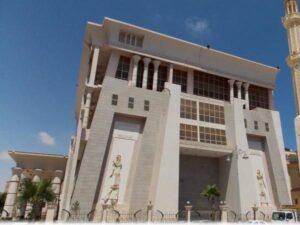
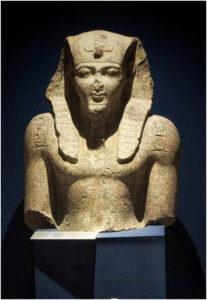
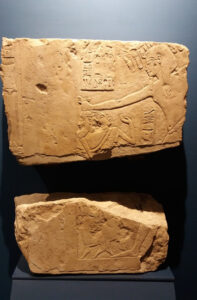

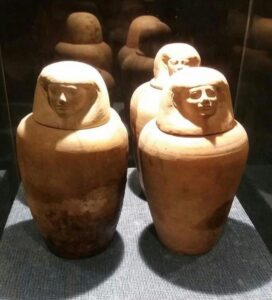



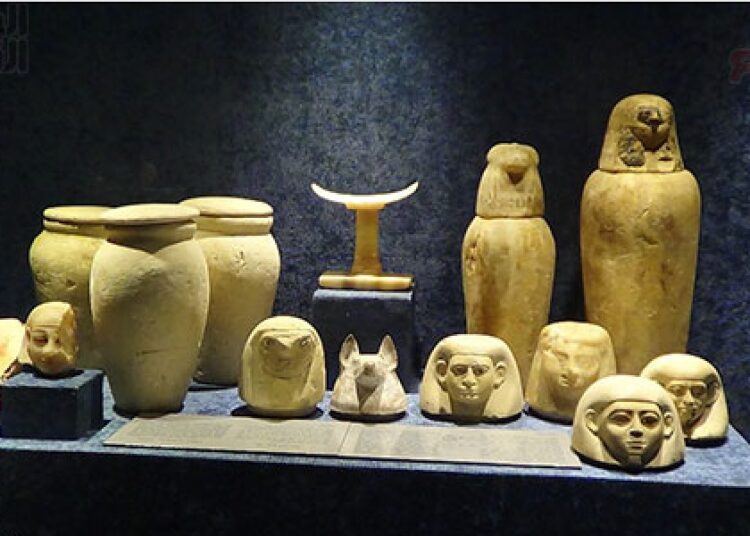


Discussion about this post